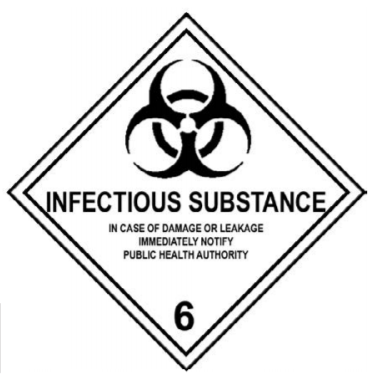Most health care facilities hire contractors to haul away their waste. Some large generators might have their own transport trucks - especially if they operate a treatment process off-site. But the transportation issues faced by most waste managers revolve around packaging the waste for transport and making sure the people taking it away know what they are doing.
Two main paths:
An entire industry exists to service the waste disposal needs of businesses. Some companies accept only MSW and take it to the local landfill. They use large trucks, the waste is not packaged, there are many smells around, and things are generally messy. However, the system works so long as waste generators do not put problem (regulated) waste in their building dumpsters. As society moves to a more refined waste management system, we are trying to put more waste into recycling and composting. But transport of MSW is relatively easy and you can find contractors who will do it for you.
Transport of radioactive, RCRA hazardous, and infectious/biohazardous waste is more regulated, expensive, and risky. These wastes are typically taken from the facility that generates them to a transfer station or a treatment, storage, and disposal facility (TSDF) rather than straight to a landfill. The TSDF may have its own landfill or it might transfer the waste elsewhere for ultimate disposal (or for more treatment).
The generator bears some legal responsibility for this waste even after it leaves the facility. Laws differ in different areas, but the generating facility almost always is charged with ensuring the waste ultimately gets to final disposal, even if another party takes over the waste for treatment.
There is no firm global or even national definition for biohazardous waste the way there is for RCRA hazardous waste and radioactive waste. However the federal Department of Transportation does have rules about trucks carrying what it called “regulated medical waste”. By this they mean waste suspected or known to contain infectious material, if that waste was collected from activities involved in the diagnosis, treatment, immunization, or research of humans or animals. The DOT has regulations on the transport of regulated medical waste. The DOT says infectious substances are those which are known or are reasonably expected to contain pathogens. Pathogens are defined as micro-organisms (including bacteria, rickettsia, parasites, fungi) and other agents such as viruses and prions, which can cause disease in humans or animals.
A key part of medical waste management is protecting employees. For this reason, some form of treatment is often done on biohazardous waste before it leaves the site of generation. It is not true that the waste must be disinfected or sterilized before entering the main treatment and disposal process, but disinfection helps protect transportation workers.
There is nothing special about waste trucks. As long as the waste is secure and not likely to fall off the truck, any street-legal truck can be used. Vehicles or containers used for transporting health-care waste should not be used for transporting non-waste material.
Vehicles should be kept locked at all times, except when loading and unloading, If needed the vehicles can be repositioned for general use, but inside of the trucks must be disinfected.
See the hazardous waste page for more on transport of RCRA hazardous waste.
Infectious substances are classified as Category A or Category B for the purposes of US Department of Transportation rules. Category A is "an infectious substance in a form capable of causing permanent disability or life-threatening or fatal disease." Category B are substances with less severe consequences.
An infectious substance which is transported in a form that, when exposure to it occurs, is capable of causing permanent disability, life-threatening or fatal disease in otherwise healthy humans or animals. Category A materials should be classified as UN2814 in the United Nations designation system.
An infectious substance which does not meet the criteria in Category A. Category B materials that infect animals but not humans are assigned to UN2900. Biological materials which are not waste but which are being "transported for diagnostic or investigative purposes" get assigned to UN3373.
Defined here as "material derived from medical treatment of an animal or human, or from biomedical research," get the transportation designation UN3291. (You may see this listed as "clinical waste" which is the term used in the UK.)
You are not required to specifically label vehicles carrying less than 333 kg of clinical waste (UN3291 material) although it is a good management practice to do so. The United Nations has standards which are used in the US also. The regulations say that any vehicle transporting more than 333 kg of biohazardous waste (treated or untreated) must have a sign on the back. This sign is copied from a World Health Organization Document:

The back of the vehicle should have a sign at least 25 cm by 25 cm. If more than one label is used (for instance, one saying regulated medical waste and one saying hazardous waste), they should be displayed side-by-side with six inches in between.
As with RCRA hazardous waste in the US, the UN guidelines call for documentation so all parties know where the waste is. RCRA calls this document a manifest while the UN calls it a consignment note, but the idea is the same. When the waste batch has arrived at the treatment or disposal facility, the truck driver or transport company fills out the consignment note and sends it to the generator. This “closes the loop” and allows the generator to know its waste is at its final disposal place. The generator should keep track of every shipment that leaves its facility and make sure it gets to a final disposal.
The consignment note includes quantity of waste, number of containers, type or source of waste, when it was picked up, and where it is headed to.
